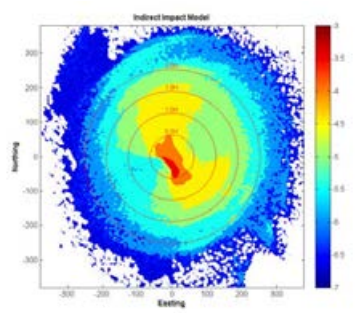Introduction
MMI developed a methodology for onshore wind turbine risk assessment under a research contract for the UK Health and Safety Executive (HSE). This has subsequently been used to assess risks from client’s onshore wind turbine developments.
The HSE appointed MMI Engineering under a research contract to investigate data sources for onshore wind turbine failure data, and to develop a methodology to assess the risks posed to people near onshore wind turbines. This was to allow the HSE to assess risk assessments performed by others and to perform their own assessments when required for land use planning or other purposes.
MMI reviewed failure data from the HSE, Renewable UK, the US National Renewable Energy Laboratory, published literature and public databases. The failure modes considered include: fire, blade throw and blade fragmentation, and tower collapse.
The risk assessment methodology embodied in the model consisted of the following steps:
The output is presented in terms of Location Specific Individual Risk, i.e. the likelihood of harm occurring to people near a wind turbine.
Application of RAPTUR
As an extension of the work for the HSE, MMI has implemented the methodology into the RAPTUR software tool. RAPTUR allows the user to input parameters describing the configuration of a specific wind turbine type and location. The output from the tool is in the form of risk plots centred on the wind turbine.
MMI has applied RAPTUR for clients looking at wind turbine sites in brownfield industrial sites, and close to potentially sensitive infrastructure, e.g. roads and railways. At the request of a client, MMI has also extended the scope of RAPTUR to include the risk from ice throw.

